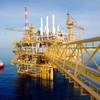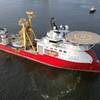DNV Publishes Oil and Gas Safety Report
In the report entitled Enhancing offshore safety and environmental performance, DNV suggests critical levers to provide a more holistic safety framework across the oil and gas industry.
CEO Remi Eriksen, DNV Maritime and Oil & Gas, said new regulations, such as the EU directive, mirror society’s zero tolerance for offshore accidents. “The offshore industry has achieved an outstanding improvement in occupational safety over the past three decades. Although it has learned much from major accidents in the past, such accidents are still occurring. Our contribution as a risk management expert is to put special efforts into assisting the offshore industry, which is now facing increasingly complex and demanding environments.”
In launching “Enhancing offshore safety and environmental performance,” DNV said it aims to offer guidance to build a safer working environment. The report can be downloaded here: http://www.dnv.com/binaries/Report_Enhancing_offshore_safety_and_environmental_performance_tcm4-576015.pdf.
“The report compiles our global experience of major accidents and studies key factors necessary for improved offshore safety and the management of the associated risks, especially when entering more demanding areas. It concludes that there are six important performance levers which we suggest should form the basis of all planning and execution of oil & gas operations. If achieved, this holistic framework should therefore lessen the probability of a major accident hazard, and thereby mitigate the risk,” Mr. Eriksen pointed out.
The six levers put forward in the report are:
1. Performance-based regulations
Offshore oil and gas operations are complex and often tailor-made for site-specific conditions. Therefore, safe adaption to local conditions, innovative approaches through performance requirements and a risk-based approach supplemented by prescriptive regulations and standards are needed. An independent verification scheme should validate that the required performance is met.
2. Clear roles and responsibilities
Generally, many parties are involved in oil and gas operations under a variety of contracts and subcontracts. It is therefore of the utmost importance that all the parties involved clearly understand their roles and responsibilities with regard to safety, and have common goals. The overall accountability for all operations should however rest with the operator or licensee.
3. Holistic risk approach
It is crucial to identify and understand the risks related to any offshore oil and gas operation. These risks will be site, operation, and time specific. It is a challenge to maintain a holistic risk overview in a total field lifecycle perspective, from early field development through engineering, construction and many years of operations and modifications and on to decommissioning. This is no less challenging when the numbers of involved parties at the different field life stages are taken into account. To ensure such a holistic approach to risk management, all parties involved in the activities need to have access to a tool that records up-to-date risk identification and provides a complete view of the risk exposures for an asset, asset cluster, project or company. DNV also recommends an integrated approach to the consideration of safety and environmental issues.
4. Shared performance monitoring
Many parties are generally involved in the planning and execution of an offshore operation. To ensure effective risk management, they must share the same safety and environmental performance targets, monitor the same safety conditions and have a common understanding of the status and effect of nonconformities and deviations.
5. Advanced barrier management
Investigations into major accidents conclude that in most cases that the events which occurred were known risks, for which a number of safety measures had been planned and implemented. However, the accidents occurred as a result of multiple barrier failures, often in combination with a lack of or inadequate controls in certain areas. Accidents are prevented by always having relevant and reliable barriers in place. Their performance must be defined and their status must be continuously monitored and acted upon when it deviates from the set targets. Although preventive barriers are preferred, mitigating barriers are also important. In this respect, improved emergency response solutions are part of the portfolio of instruments to limit harm to people, assets and the environment.
6. People, process and plant
Safety and environmental performance cannot be assured through technical systems alone. Safe operations are the product of safe and reliable technology, an effective organization, a competent strong management and motivated people who at all times know the relevant risks, understand their role in managing those risks and then effectively manage them. Therefore, the interaction between people, technology and the organization must be taken into account when managing the risk relating to operations. Requirements regarding this interaction must be clear in all parts of the safety and environmental management system. However, such knowledge and experience within the industry may be decreasing as people, processes and plant age and obsolescence becomes an increasing concern.
dnv.com












